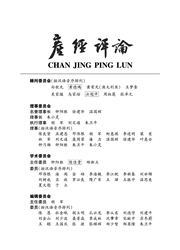

 中文摘要:
中文摘要:
同样是上下游企业之间的交易,在有些行业中是下游企业向上游企业支付特许费,而在另一些行业中却是上游企业向下游企业支付通道费。对这种交易形式和交易费用的差异及其产生原因,多数观点认为是下游买方抗衡势力不同导致的,当买方抗衡势力较小时,下游向上游支付特许费;当买方抗衡势力较大时,上游向下游支付通道费。通过构建连续垄断和双边双寡头的纵向市场模型,探讨这种观点成立的条件以及背后的机理,在合作博弈的框架下研究不同竞争形式中买方抗衡势力与特许费、通道费的关系。研究结果发现:上述观点不总是成立的,只有在双边双寡头市场结构且零售商进行差异化Bertrand竞争的情况下,上述观点才成立。而在连续垄断和双边双寡头Coumot竞争的情况下,无论买方抗衡势力多大都不会出现通道费。买方抗衡势力不是出现通道费的充分条件,通道费的出现还与市场结构、竞争形式等因素有关。
 英文摘要:
英文摘要:
For the same transactions between upstream and downstream, in some industries downstream must pay franchise fees to upstream, while in other industries upstream need pay slotting allowances to the downstream. Why is there such a difference in transactions form? Most think that it is caused by the differ- ences in countervailing power, and when the countervailing power is small, the retailers will pay franchise fees to the manufacturers. However, when the countervailing power is large, the manufacturers have to pay slotting allowances to retailers. This paper discusses the conditions for the establishment of this view and the mecha- nism behind it. We study the impact of countervailing power on the transactions between upstream and down- stream in different forms of competition by constructing a continuous monopoly and bilateral duopoly vertical re- lationship model. We find that: The above points are not always right, and only in bilateral duopoly structure, and retailers doing Bertrand competition, the above point is correct. In the case of continuous monopoly, bilat- eral duopoly structure and retailers doing Cournot competition, slotting allowance will never appear no matter how big the countervailing power is. The buyer countervailing power is not a sufficient condition for the emer- gence of depends slotting allowances, and whether the manufacturers will pay slotting allowances to retailers or not also on the other factors, such as market structure, competition form.
 同期刊论文项目
同期刊论文项目
 同项目期刊论文
同项目期刊论文
 期刊信息
期刊信息
